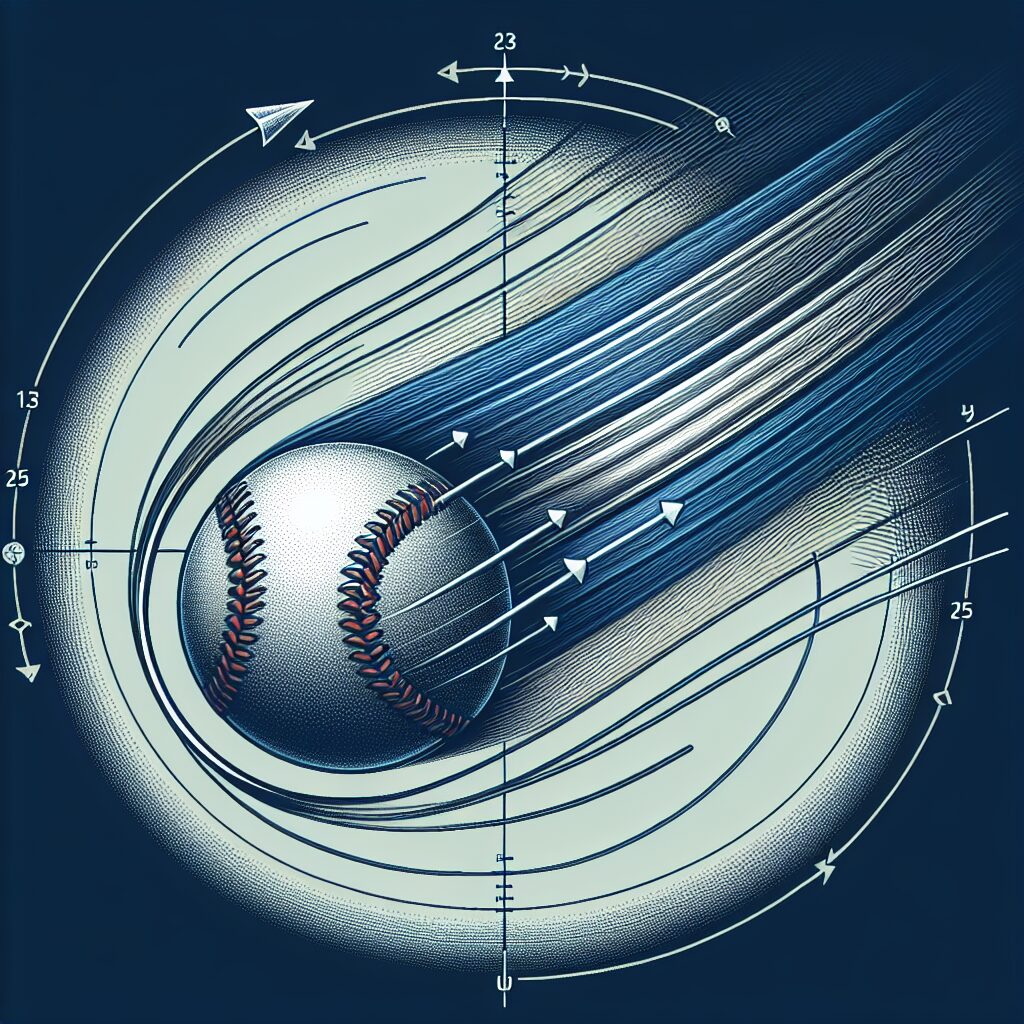Aerodynamic Forces: Shaping Ball Flight in Wind
Did you know that the flight of a ball is not solely dependent on the force exerted by the player? It is greatly influenced by the aerodynamic forces acting upon it. Aerodynamic forces play a crucial role in determining the trajectory and behavior of a ball when faced with wind resistance. Understanding these forces can help athletes, particularly those in sports like golf, tennis, and soccer, better anticipate and control their shots.
When a ball moves through the air, it encounters two main aerodynamic forces – drag and lift. Drag is the force that acts opposite to the direction of motion, slowing down the ball. The shape, weight, and surface of the ball all contribute to the drag force. On the other hand, lift is the upward force that arises due to differences in air pressure on the top and bottom surfaces of the ball. This force can influence the ball’s path, causing it to curve or slice.
In the upcoming sections, we will delve deeper into the various factors that affect drag and lift forces, such as the spin and speed of the ball. Additionally, we will explore how these aerodynamic forces can shape ball flight in different wind conditions. By grasping the key takeaways discussed in this article, you’ll be equipped with valuable insights into how to optimize your performance and achieve greater precision in your game. So, let’s get started!
Key Takeaways
1. Weight distribution and spin play crucial roles in controlling a golf ball‘s trajectory in windy conditions. For long shots, a golfer strives to create a high spin rate using the backspin technique, which imposes lift and counters the downward pull of gravity.
2. Wind affects the golf ball in three main ways: headwind, tailwind, and crosswind. Each type of wind alters the ball’s flight path and requires specific adjustments by the golfer to compensate and ensure accuracy.
3. Understanding the Bernoulli principle can help golfers comprehend the lift forces working on their shots. As the ball moves through the air, the air flowing above and below the ball differs in speed, resulting in a pressure difference that creates lift.
4. The dimples on a golf ball are not just for aesthetics; they significantly reduce drag and improve lift. These indentations help the air flow smoothly around the ball, minimizing the creation of turbulence that can hinder its flight.
5. When playing golf in crosswinds, it is essential to utilize the wind to optimize ball flight rather than fighting against it. Adjusting the clubface angle, aiming upwind, or adapting the swing can help golfers harness the wind’s influence, enabling accurate shots even in challenging conditions.
How do Aerodynamic Forces Shape Ball Flight in Wind?
1. Lift and Drag
The two primary aerodynamic forces that influence ball flight in wind are lift and drag. Lift is an upward force generated by the flow of air over the surface of the ball, while drag is a resistance force that acts opposite to the direction of motion. When a ball is hit, the combination of these forces determines the trajectory and distance it will travel.
2. Bernoulli’s Principle
Bernoulli’s principle plays a significant role in shaping ball flight. According to this principle, as the speed of airflow increases, the pressure decreases. This principle explains how a ball’s dimples contribute to its flight. The dimples disrupt the smooth airflow, creating a thin layer of turbulent air that reduces drag and allows the ball to maintain lift for longer periods.
3. Spin
The spin applied to the ball also affects its aerodynamic behavior in wind. Backspin creates an upward force, increasing lift and helping the ball stay in the air longer. This results in a higher trajectory and more distance. Conversely, sidespin can cause the ball to curve in the air. By using sidespin strategically, golfers and tennis players can manipulate their shots to counteract crosswinds and achieve accuracy.
4. Crosswinds and Air Density
Crosswinds have a significant impact on ball flight in windy conditions. The angle and speed of the crosswind can alter the trajectory and direction of the ball. Golfers and other athletes must adjust their aim and shot strength accordingly to compensate for these external forces. Additionally, air density, influenced by factors such as altitude and temperature, affects how a ball behaves in wind. Thinner air at higher altitudes creates less resistance, allowing the ball to travel further.
5. Equipment Design
The design of the ball itself also plays a role in its aerodynamic performance in wind. Sports balls, such as golf balls and soccer balls, are engineered with specific features to optimize their flight. For example, golf balls have different dimple patterns and constructions, which impact their ability to generate lift and reduce drag. Similarly, the design of a soccer ball with its panels and seams affects how it interacts with the air during flight.
6. Tips for Adjusting to Windy Conditions:
- Pay attention to wind speed and direction before taking a shot.
- Use a lower trajectory shot to minimize the impact of crosswinds.
- Adjust your aim and alignment to compensate for wind drift.
- Consider using equipment with features specifically designed for windy conditions.
- Experiment with different ball spins and shot techniques to gain better control in the wind.
Frequently Asked Questions:
1. How do aerodynamic forces affect ball flight in wind?
Aerodynamic forces play a crucial role in shaping ball flight in wind. The interaction between the airflow and the ball’s surface creates lift and drag forces, which determine the trajectory and distance the ball travels.
2. Does wind direction impact ball flight?
Yes, wind direction has a significant impact on the ball’s flight. When hitting against the wind, the ball experiences increased drag and reduced lift, causing it to travel a shorter distance and potentially change direction. Conversely, hitting with the wind can provide a boost in distance with less drag force.
3. How does the dimple pattern on a golf ball affect its aerodynamics?
The dimple pattern on a golf ball is specifically designed to enhance its aerodynamics. By creating turbulence in the boundary layer of air surrounding the ball, the dimples reduce drag and improve lift, allowing the ball to stay airborne for a longer distance.
4. Can aerodynamic forces help in controlling ball spin?
Yes, aerodynamic forces can influence the spin of a ball. For instance, a backspin can be created by generating more lift force than drag force, leading to a higher trajectory and increased control. On the other hand, side spin can be affected by the angle of attack and wind conditions.
5. What role does air density play in ball flight?
Air density affects ball flight by altering the resistance the ball experiences. In denser air, there is more drag force, which can result in shorter distances and decreased carry. Understanding how air density changes under different conditions is crucial for optimizing ball flight in wind.
6. How can players adjust their shots to compensate for wind?
Players can make adjustments based on wind conditions to achieve more accurate and desired ball flight. This may include altering club selection, adjusting the aim, changing the swing path, or modifying shot type, all with the intention of minimizing the impact of wind on the ball’s trajectory.
7. Are certain ball designs more resistant to wind than others?
Yes, certain ball designs are more resistant to wind than others. Golf balls with a lower spin rate and a higher dimple count tend to be less affected by crosswinds. Additionally, balls with a more aerodynamic dimple pattern can maximize lift and minimize drag, resulting in improved wind performance.
8. How does wind speed influence ball flight?
Wind speed has a direct impact on the ball’s flight. Higher wind speeds amplify the effect of aerodynamic forces, causing more significant deviations in the ball’s trajectory. It is crucial to consider wind speed when selecting clubs, adjusting aim, and planning shots to ensure desired outcomes.
9. Can players use wind to their advantage in ball flight?
Absolutely! Understanding how to utilize wind conditions can give players a strategic advantage. Skilled golfers can intentionally shape their shots to take advantage of headwinds, tailwinds, or crosswinds by adjusting the ball’s launch angle, spin, and trajectory.
10. Are there any specific techniques or training exercises to improve ball flight in wind?
Yes, there are techniques and training exercises that can help improve ball flight in wind. Working with a golf professional or instructor who can provide guidance on wind-related swing adjustments, practicing shots in various wind conditions, and using specialized training aids can all contribute to better performance in windy conditions.
Final Thoughts:
The influence of aerodynamic forces on ball flight in wind is a fascinating aspect of the game. Understanding these forces and their effects can greatly enhance a golfer’s ability to navigate challenging wind conditions and make more precise shots. By continually honing their knowledge and skills in this realm, players can effectively harness the power of aerodynamics to achieve optimal ball flight and ultimately improve their performance on the course.
Exploring the intricacies of aerodynamic forces in relation to ball flight unveils the impressive physics underlying every shot. As golfers grasp how elements like wind direction, ball design, and air density shape their game, they gain valuable insight into the art of truly mastering ball flight. Implementing strategies to leverage these forces to their advantage, players can elevate their skills and elevate the joy and satisfaction they derive from the sport.




